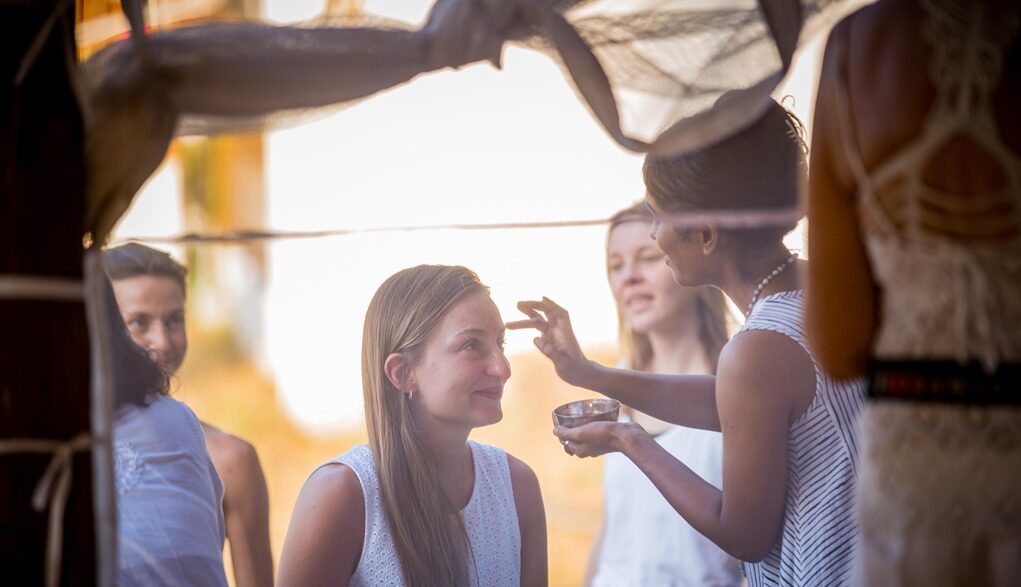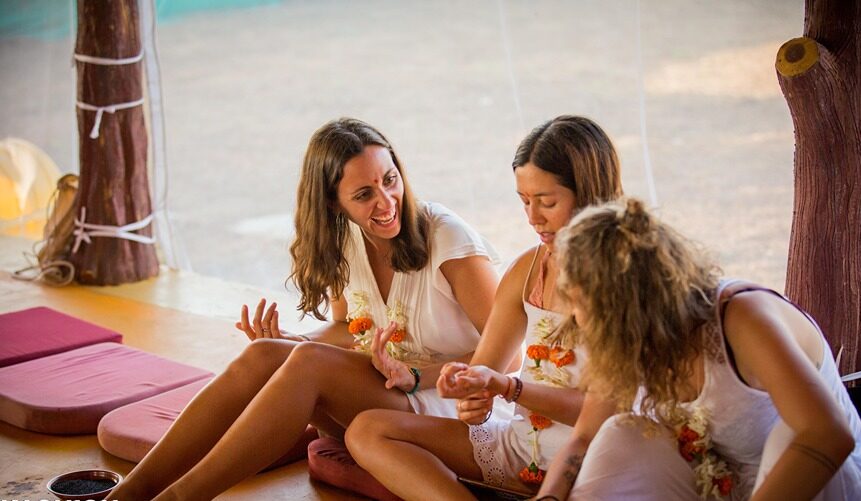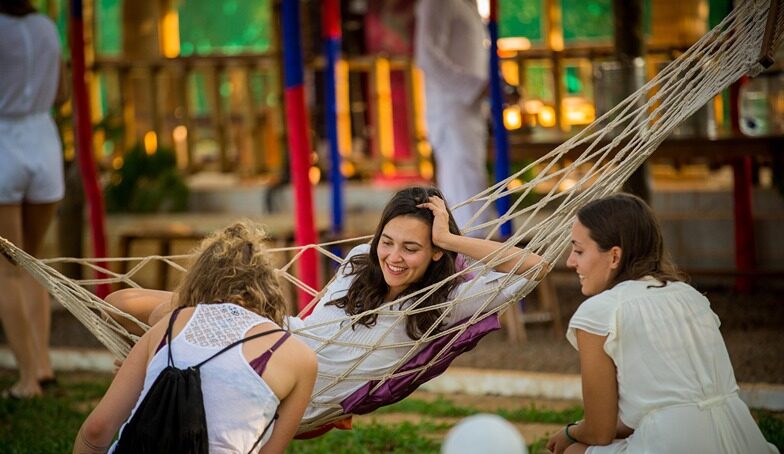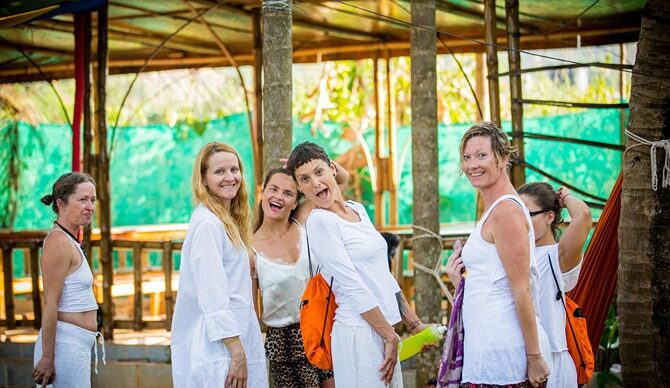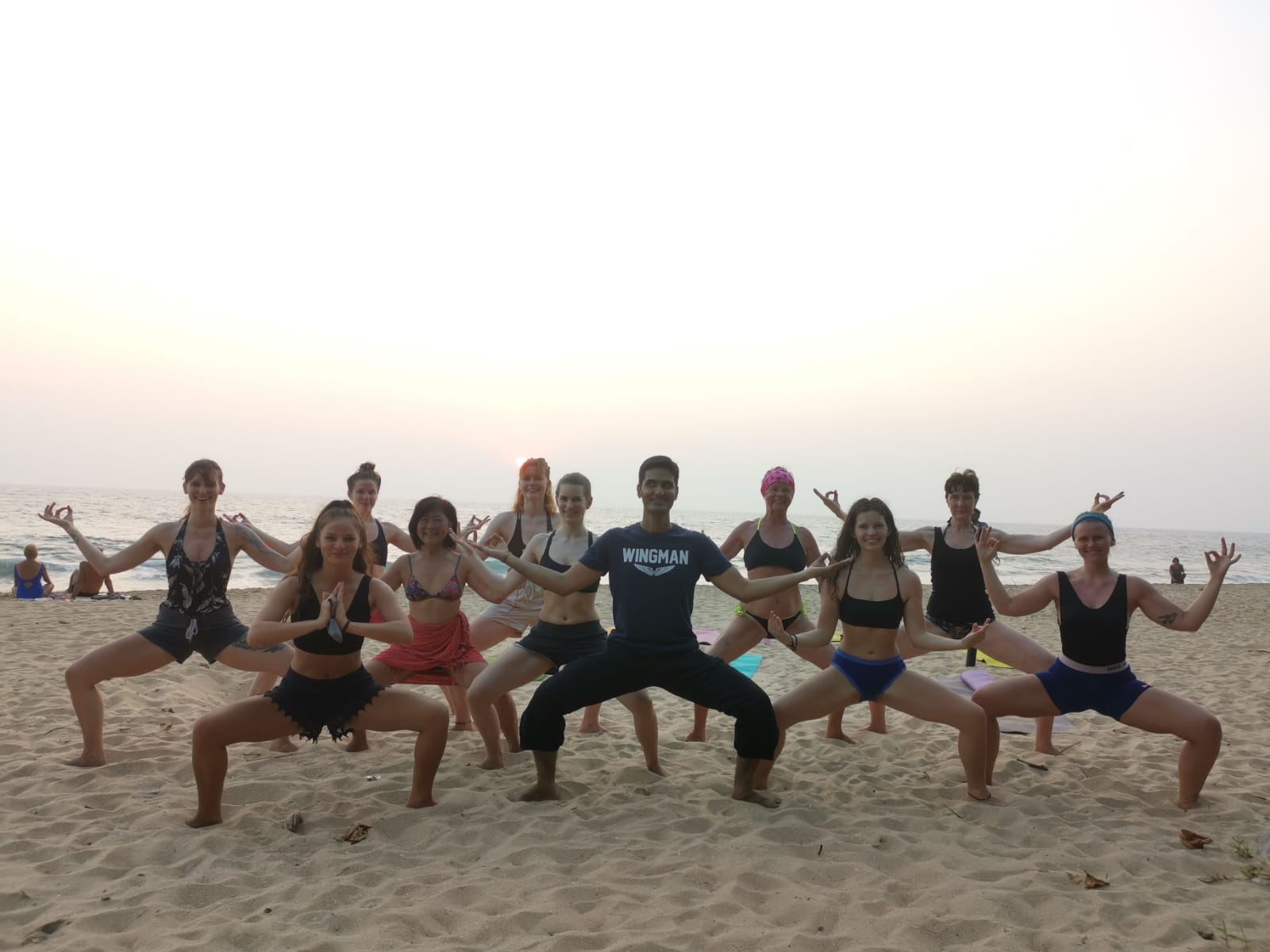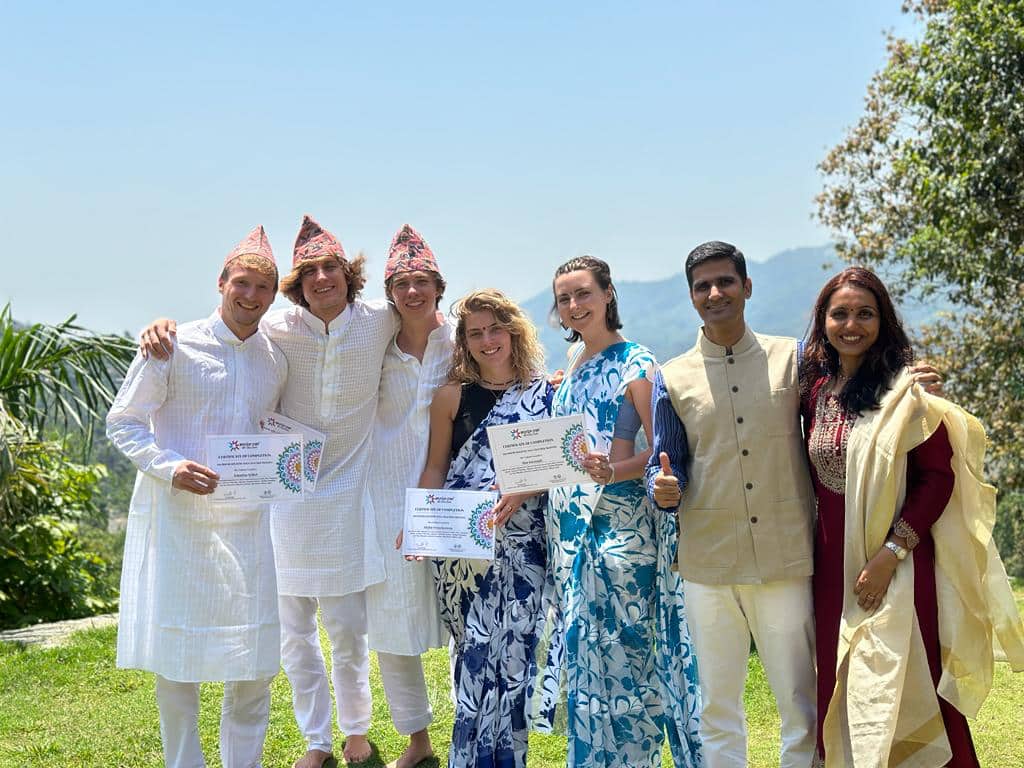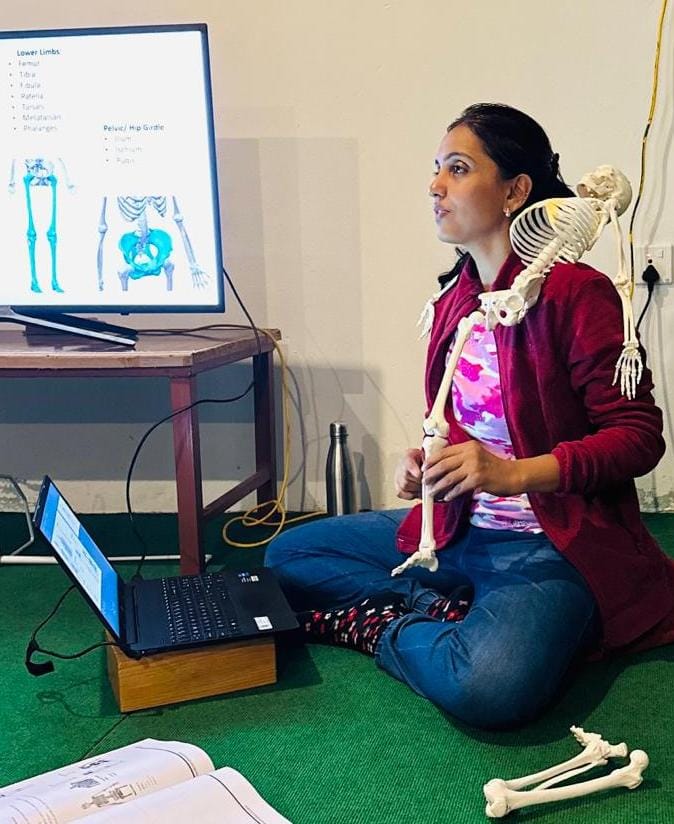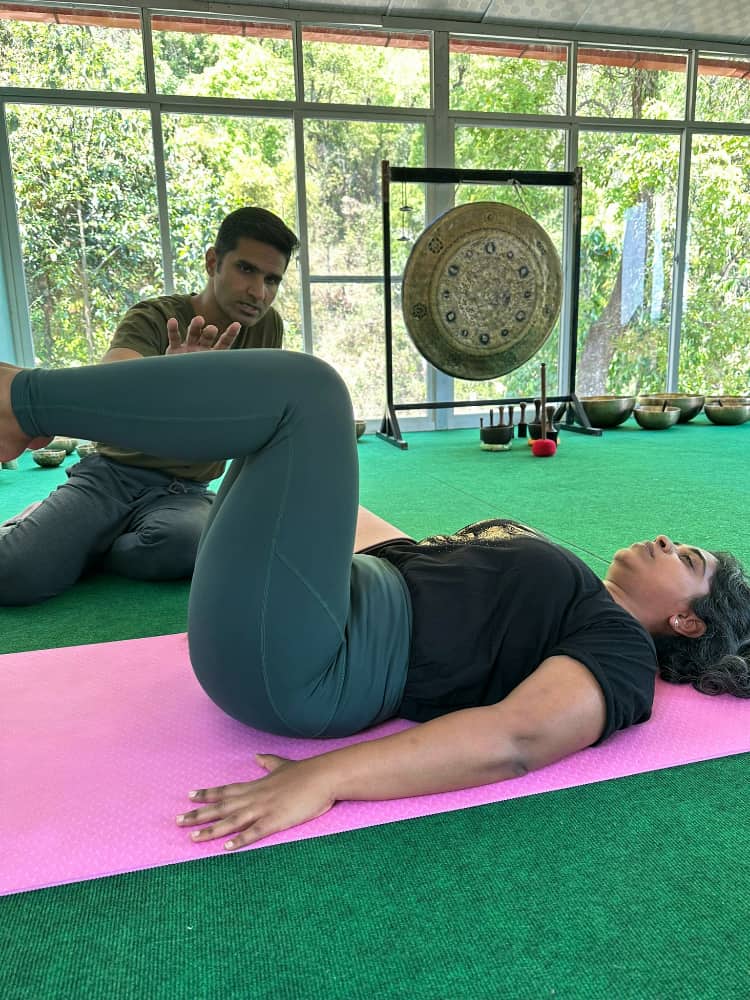
Get USD 100 Early Bird Discount
200 Hour Yoga Teacher Training - Palolem, GOA
Discover Holistic Yoga from Authentic Yoga Teachers
November 16 – December 13, 2023
Enquire Now

28 days of Intensive Program
Self-reflect and introspect in the picturesque location of Palolem, Goa.
High Quality, Safe, Accessible & Equitable Yoga Teaching

Asanas. Pranayama. Kriyas. Mantras.
Individualised Asana Alignment, Propwork in Yoga Props, Individualised approach to Pranayama, Kriyas, Ashtanga Vinyasa Primary Series and Yin Yoga

Meditation Techniques
Osho Dynamic Meditation, Yoga Nidra, Cyclic Meditation, Om Meditation, Chakra Meditation, Mantra Meditation and much more

Yoga Philosophy
Hatha Yoga, 6 systems of Indian Philosophy, Patanjala Yoga Darshana, Bhagvadgita

Anatomy & Physiology
Yogic Anatomy, Functional Anatomy, Various Systems of the Body, Physiology of Yogic Practices

Sattvic Meals
to complement pactices of the 200 hour yoga teacher training
What PEOPLE SAY
EXCELLENTTrustindex verifies that the original source of the review is Google. Doing my Yoga Teacher Training at Sayujya Yoga with Hardik Sir and Prutha Ma’am has been one of the most beautiful experiences of my life 🙏 From day one, I felt so safe, supported, and seen. Prutha Ma’am’s way of teaching theory, philosophy, and anatomy is so deep yet easy to understand, she teaches with so much heart and patience. I looked forward to every session with her because I always left feeling inspired and more connected to yoga, thank you ma'am 🙏 💫 Hardik Sir brought so much calm, strength, and clarity into our asana, pranayama, and meditation sessions. The way he explains alignment and guides the class - so simple, yet so powerful. His presence itself is meditative 🧘♀️. Thank you sir 🙏 What touched me the most is how humble and grounded both of them are. Despite being so experienced and knowledgeable, they teach like friends, not gurus. No ego, just pure dedication to sharing yoga from the heart ❤️ I truly bow down to both Hardik Sir and Prutha Ma’am with folded hands and a full heart. 🙇♀️🙏 Their energy, their simplicity, their dedication has left a permanent mark on my journey—not just as a yoga teacher, but as a human being. This journey brought me back to myself. I carry so many learnings, memories, and inner shifts from this training. Truly grateful to both Hardik Sir and Prutha Ma’am. I will always be thankful 🌿✨🙏Trustindex verifies that the original source of the review is Google. I recently completed my 200-hour Yoga DDC ( Discipline, Dedication and consistency Course) from Sayujya Yoga institute owned and operated by this amazing husband-wife duo Hardik Sir and Prutha Ma'am, and I couldn't be more grateful for the experience. Their dedication and selfless love for yoga, combined with profound understanding of its origins and teaching methodology is truly inspiring. They embody the essence of the practice, their guidance with clarity and compassion makes them unique in this field. Their sequencing is beautifully structured and thoughtfully designed, allowing each session to flow naturally while building deep awareness of the body and breath. Hardik sir's instructions are clear, precise, and grounded in deep understanding of yoga Asana reflecting both Discipline and insight. Prutha Ma'am's grasp of yoga philosophy, yoga Sutra is truly exceptional. What truly sets them apart is the genuine care and attention they offer to every student. Whether you're a beginner or an advanced practitioner, they create a supportive and uplifting environment for growth. Some experiences go beyond language; they are meant to be lived, not explained. Highly recommended for anyone seeking a transformative yoga journey. Thank you both for your guidance and wisdom!Trustindex verifies that the original source of the review is Google. One of the most amazing experience with the perfect guide & teachers, having no idea about this field but curiosity to learn I had enrolled into Sayujya yoga, & it turned out to be the shifting phase, shaping & dusting of our Perspective towards life & our bond with ourself , one of the most important thing before you embark a new journey is the one that guides you there PRUTHA & HARDIK both the teachers were the best director and insightful teachers that made us say it was WORTH ! ,taking up this even though we hesitate to give our time into something that we are skeptical about spending , starting as a new newbie to holding wise perspective about life ,from both the efforts of our teachers knowledge on philosophy, anatomy, Asana practice & they articulating it to our understanding which makes this school a recommended choice! If it’s about YOGA! -SAYUJYA YOGA is the place 👍🏻✨🙏🏻Trustindex verifies that the original source of the review is Google. My 200-Hour Yoga Teacher Training Journey This training has been truly transformational. With expert guidance from Hardik Sir and Prutha Ma’am, I’ve deepened my knowledge of alignment, anatomy, and yoga philosophy. Their support helped me grow confidently as a teacher and as a person. A special highlight has been the healing of my long-term carpal tunnel syndrome — after practicing the arm-strengthening exercises and alignment techniques, my morning numbness has greatly reduced. I’m grateful for this foundation and excited to continue my yoga journey, sharing what I’ve learned with others. — Vidhya ThirunavukkarasuTrustindex verifies that the original source of the review is Google. Iam Thrilled to have completed the 200hr (4 month)Holistic Yoga TTC program at Sayujaya Yoga! Prutha Ma'am's theory classes on philosophy, anatomy, and physiology were exceptional, making complex concepts clear and engaging. Hardik Sir's asana classes were phenomenal, focusing on precise alignments and tailored prop usage for each student's unique anatomy. Both teachers were dedicated and supportive, pushing us to reach our full potential. This 4-month journey was truly memorable, and I'm grateful for the opportunity. Highly recommend Sayujaya Yoga to yoga enthusiasts! 🙏💖 Thank you, Prutha Ma'am and Hardik Sir, for guiding me through this transformative journey. I'm forever grateful for this experience! 🙏One of my best and blissful decision 💖.Trustindex verifies that the original source of the review is Google. I feel immensely blessed to have been a part of the YTT with Sayujya Yoga. Prutha Ma'am and Hardik Sir are my favourite teachers. Their own yogic practise and understansding is quite deep, which reflects naturally in their teaching. The best thing I got out of the training is the confidence to teach, to share the light of yoga with others. Thank you so very very very much loving teachers.Trustindex verifies that the original source of the review is Google. I just finished my certificate course with Sayujya Yoga ...My experience at Sayujjya Yoga has been nothing short of transformative. It goes far beyond the physical practice of yoga and delves deeply into the roots of yogic tradition, blending practical asana work with rich philosophical, anatomical, and alignment-based education. What stood out most was the depth of knowledge shared throughout the sessions. The teachers Hardik and Prutha at Sayujjya have a profound understanding of yoga philosophy, presenting ancient wisdom like the Yoga Sutras which was explained in depth and very interestly. Equally impressive was the detailed focus on anatomy and alignment. Every posture was broken down with precision, helping me understand not just how to get into a pose, but why it matters, and how to do it safely and mindfully. This level of guidance helped me deepen my physical practice and avoid injury, while also building a stronger connection between body and breath. This is a place where both beginners and seasoned practitioners can grow.Trustindex verifies that the original source of the review is Google. Personally, I believe that we don’t have to search for yoga. Yoga comes to us at the right time. Learning yoga may take years - even a life time. But in this journey Sayujya Yoga, Prutha Maam and Hardik sir have helped me to complete 4 courses. With them, everyday felt like a beginning of a new journey. The enthusiasm they show in every class is admirable. I am truly in awe with their patience, in-depth knowledge and their willingness to repeat any given concept. I enjoyed my time with them and I sincerely wish that they continue doing what they do best. Regards, LimishaTrustindex verifies that the original source of the review is Google. I would definitely recommend Sayujya Yoga for any one who wants to use Yoga as a medium for inner search & well being. I have done their 200 hour TTC and 30 hour Yin Yoga, the learning journey has been great. The duo of Prutha Mam and Hardik sir makes the journey very interesting as they being diverse perspective in the course. They charge very reasonable fees in comparison to any other institute. Also they cover Yoga not only from Asana presepective: they cover Asana practice, Philosophy, Physiology, Anatomy and lot of other aspects to make it holistic course.Trustindex verifies that the original source of the review is Google. I recently completed my TTC (200 Hours) from Sayujya Yoga. My gratitude to Hardik Sir and Prutha Madam for making significant contribution to my Life. Sayujya Yoga teaches authentic yoga. I looked forward for each class as theory and practice were combined in such a way that learning became very easy. I really enjoyed Dhyana, Pranayama, Anatomy and Physiology, Meditation, Mantra Chanting and Yoga Philosophy. I Thank Hardik Sir and Prutha Madam from the bottom of my heart and looking forward to join your Advance Course.
Comprehensive 400 Page Manual
200 Hour Yoga Teacher Training
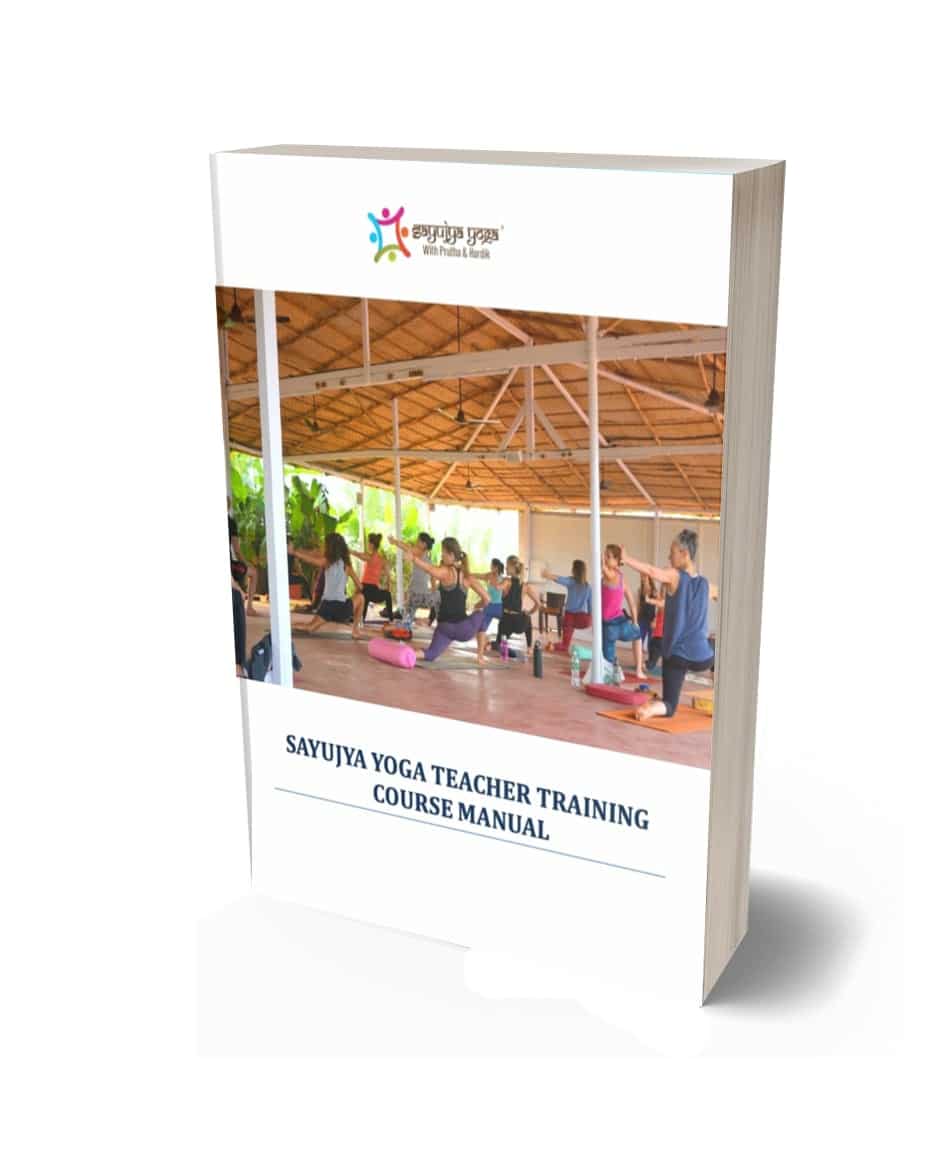
This guide is meant to provide aspiring yoga teachers with a clear and simple introduction to Traditional Yoga and the scientific method as it applies to the art and science of teaching it. The contents also meet the criteria for a 200 hour Yoga Teacher Training programme set forth by the Yoga Alliance. It is my sincere wish that this book will equip you with the knowledge and confidence to lead a yoga class that is beneficial to students of all levels while also igniting a passion for further exploration of the yoga tradition.
Subjects Taught
The practice of Yoga originated over 5000 years ago in India. A multi-dimensional, subtle science aimed at harmonizing the body and mind through wide variety of practices-culminating in spiritual upliftment. Influencing the Psycho- Physiological dimension, the outer rungs of the 8 limbed Yoga of Sage Patanjali include Yama & Niyama (Moral code of Conduct for Yoga Practitioners), Asana (Physical Postures) , Pranayama (Breathwork) and the inner rungs include Pratyahara (Sense Withdrawal), Dharana (Concentration) , Dhyana (Meditation) and Samadhi (Contemplation) to harmonise the Body, Pranas and bring balance to the mind respectively. The subtle and mystical dimensions of one’s being is nurtured and experienced through the journey of these 8 Limbs laid down by Sage Patanjali.
Just as a human is a vital whole that is more than the sum of its limbs and other bodily components, Patanjali’s Ashtanga Yoga is more than the sum of the phases of the eight-limbed path. While all are necessary to the process, their combination produces something vital.
Coping with a society that requires commercialization, an easy and non-threatening strategy of focusing on Asana while ignoring the other limbs is an adversary to traditional yogic wisdom, not to mention a digression from the intended / lofty objective of transcending the mind.
The path of Ashtanga Yoga is shown to us by Sage Patanjali in Patanjala Yoga Darshana that is divided into: 4 Chapters that contains 195 sutras (aphorisms).
Ashtanga Vinyasa Yoga is based on a vigorous physical practise that involves a series of poses linked together with breath to make a continuous routine. The practise requires a lot of physical strength, flexibility, and stamina, which is why many people think of it as a tough practice. Adding an Ashtanga Vinyasa practice to your daily routine is a good way to keep your mind and body healthy and strong, whether you’re just starting out with yoga or looking for something new as your goals change.
Ashtanga Vinyasa style of practicing Asanas is very active and athletic. It is made up of six series or levels, and the poses are always done in the same sequence. It is based on vinyasa, which is a way of moving smoothly from one pose to the next while focusing on energy and breath. Even though it is a very physical practise, it also helps clear the mind and find peace within.
Yin Yoga has the same goals and purposes as any other yoga style; however, it directs the stimulation that is typically produced in the body. Yin Yoga is a fantastic complement to the dynamic and muscular (yang) kinds of yoga that emphasize internal heat and the stretching and contraction of our muscles. It is suitable for practically all levels of students. In general, Yin Yoga focuses on the connective tissues of the hips, pelvis, and lower spine. While this form of yoga may appear to be monotonous, passive, or gentle at first, the lengthy duration of the positions makes it highly hard. We can stay in the poses for one to twenty minutes! Exercise has a varied effect on yin and yang tissues. You must experience this to truly understand what Yin Yoga is all about. After experiencing it even once, you will know that you have only been performing half of the asana practice. In the context of elasticity, our bones and their ligaments can be considered yin-like compared to our more yang-like muscles. So in order to make our ligaments stronger we need to practice yin yoga. Yin Yoga is for joints and Yang Yoga is for muscles. As a yoga practitioner we need to constantly balance our Yin and Yang energies and that is what is called as a balanced practice.
Pranayama is a word that is widely misunderstood. It is commonly translated as “breathing exercise.” Of course, the activity increases the delivery of oxygen to the body and the elimination of carbon dioxide. There is no doubt about it, and this brings about amazing physiological advantages. However, pranayama is more than just a respiratory workout or a breath exercise.
Pranayama does not imply command of the life energy. Pranayama does not imply regulating one’s breathing. So, what exactly is pranayama? Pranayama is the practice of directing the vital energy to each and every corner of the body. It is a procedure that awakes latent prana, the physical body’s resting essential vitality. It is part of a larger system of reintegration, rebalancing, and re-harmonization of body and mind, a system that cleanses and strengthens, removing physical and mental strain and weakness. Pranayama simultaneously awakens the inner consciousness.
Pranayama practice recharges the physical body’s energy, which is subsequently carried through the ida and pingala nadis in the form of electrical impulses to all areas of the body, including the brain. Scientists have discovered that when pranayama is practiced, both hemispheres of the brain are stimulated and there are significant changes in the electrical impulses of the brain.
Meditation is a way of life. ‘darshan’ is another word for life experience. Darshan is a term that most of us are acquainted with. Darshan is a type of ‘inner vision’ that is distinct from a psychic encounter. When a person receives this darshan, he experiences the same level of awareness as when he is awake, and therefore meditation is a way of life.
The raja yoga of Sage Patanjali has maintained the idea that when the mind and its qualities are controlled by the continuous practice of yoga, a higher level of consciousness manifests; and this higher state of awareness is meditation. Because we are involved in yoga practices in some form, we will need to know how to proceed with meditation. We have not accomplished meditation by closing our eyes and disconnecting our minds from sensory input.
Based on our observations and what we have learned from the scriptures, the state of meditation is a dynamic state of awareness that changes not only the subjective, psychic experience, but also the whole character and reactions of the personality. Transformation is a critical process that occurs after meditation. There also seem to be prerequisites to meditation.
Everyone should remember that meditation requires an object to act as a sheet anchor for the consciousness to move around.
There are two kinds of approaches to asanas. One is Functional approach and other is aesthetic approach. Functional approach is all about introspection. Aesthetic Approach is all about cerebral abstraction. Functional approach is all about how and what you feel in the poses whereas aesthetic approach is all about how do I look? Functional approach takes into consideration skeletal variations and based on that selects the archetypal poses which will be most suitable for the student. In Functional approach, asanas are done to harmonize the flow of pranas. Alignment is asanas will be unique for individuals as we all look same from outside but we all have different skeletal structure and proportions of the limbs. Some individuals have long arms compared to the torso, whereas some have shorts arms. Alignment approach towards asanas should not be rigid, it should be adaptive and considerate to human skeletal variations. Functional Approach towards asanas always respects bone to bone compression and allows usage of props to overcome this limitation.
There are two types of restrictions which a student faces while doing any pose. Muscular Tension and Joint Compression. With regular asana practice, muscular tension goes away and then our body reaches the end range of motion which is compression of bones. This the ultimate range of motion and this is edge which will be different for everyone. Thus, as a yoga teacher or practitioner it is very important to understand that everyone is unique and so will be their yoga poses. As Bernie Clark says, we don’t use our body to go into the poses, but we use the pose to go inside the body.
Darshana’ in English is translated as ‘Philosophy’, (Philo + Sophia) (Love for Wisdom). But for Darshana, the word Tattva Gyan should be used. (Tat = That , Tva= Ness & Gyan= Knowledge) .Therefore, Tattva = Real essence & hence we can say that knowing the things in their real essence is Tattva Gyan.It does not mean seeing with the eyes or other senses in the outside world. But it means to see something beyond the senses and mind.
The word ‘Darshana’ comes from ‘Drish’ which ,means ‘to see’ / ‘to know’. ‘Na’ is a suffix which suggest ‘the instrument’.
Therefore ‘Darshan’ is : Perspective to look at the world / Instrument of knowledge.
Indian Yoga Philosophy or Bhartiya Darshana or Bhartiya Tattva Gyana is divided into two schools of thoughts:
Astika (Orthodox) Darshana- Accepts validity of Vedas. They are Nyaya Darshana, Vaisheshika Darshana, Samkhya Darshana, Yoga Darshana, Mimansa Darshana, Vedanta Darshana.
Yoga Philosophy falls under the above category of Astika (Orthodox) Darshana.
Nastika ( Heterodox) Darshana- Negates validity of Vedas. They are Charvaka Darshana, Jain Darshana and Baudha Darshana.
Curriculum & Schedule
As per Elevated RYS 200 Standards
The team at Sayujya Yoga spent six months going over the guidelines word for word and designing the most up-to-date and useful version of 200 hour Yoga teacher training for students. We have introduced a new curriculum with exciting activities and sessions to make your YTTC experience one-of-a-kind and enriching.
History, Origin & Objectives
- Etymology of Yoga
- Origin & Development
- Principles of Yoga
- Aims & Objectives of Yoga
Multifold paths of Yoga
Japa Yoga, Mantra Yoga, Bhakti Yoga, Karma Yoga,
Jnana Yoga, Nada Yoga, Raja Yoga, Hatha Yoga
Six Systems of Indian Philosophy
- Study of Major Yogic Texts
- Patanjala Yoga Darshana
- Hatha Yoga Texts
- Bhagavad Gita
Important Yogic Concepts
- Triguna Theory
- Pancha Kosha
- Pancha Mahabhuta
Yoga Sutras
- Definition of yoga
- 5 Levels of Mind (Chitta Bhumi)
- Objetive of Yoga
- Vrittis ( 5 Fold Modifications of the Mind)
- Chitta Vritti Nirodha (Means to attain Cessation of Modifications of the mind)
- Concept of Ishwar
- Antarayas (Obstacles in the path of Yoga)
- Chitta Prasadana (Concept of purification of Chitta)
- Kriya Yoga
- Kleshas ( 5 Afflictions)
- Ashtanga Yoga
- Yamas & Niyamas ( Observances & Restraints)
- Asana
- Pranayama
- Pratyahara
- Dharana
- Dhyana
- Samadhi
Yogic Anatomy: Pranas, Nadis & Chakras
Mantras – Chanting & Meaning
Anatomy and Physiology
- What is Anatomy
- What is Physiology
- Skeletal System
- Muscular System
- Digestive System
- Respiratory System
- Circulatory System
- Nervous System
- Endocrine System
- Physiological Effects of various Yogic Practices
Functional Anatomy
- Joint Compression & Muscle Tension
- Proportion & Joint Orientation
- Kinetic Chain in Yogasanas
Asanas
- Traditional Surya Namaskar
- Surya Namaskar A & B
- Satyananda Style Suryanamaskar
- Pawanmuktasana Series 1,2,3
- Relaxing Asanas
- Meditative Asanas
- Standing Asanas
- Forward Bending Asanas
- Back Extensions
- Twisting Asanas
- Inverted Asanas
- Arm Loading Asanas
- Asana Flow
- Breathe Body Co-ordination
- Individualised Alignment in Asanas
- Functional approach towards Asanas
- Propwork in Asanas to overcome structural limitations
- Ashtanga Vinyasa Primary Series
- Yin Yoga
Pranayama
- Sectional Breathing
- Yogic Breathing
- Surya Abhyas
- Chandra Abhyas
- Surya Bhedan
- Chandra Bhedan
- Anulom Vilom
- Ujjayi
- Sheetkari
- Shitali
- Bhastrika
- Bhramari
Mudras & Bandhas
- Cultural Mudras
- Hand Mudras
- Facial Mudras
- Tribandha
Kriyas (Cleansing Practice)
- Kapalbhati
- Jal Neti
- Vaman Dhauti
- Trataka
- Laghu Shankhaprakshalana
Meditation & Relaxation practices
- Morning Mantras
- Yoga Nidra
- Kriya Yoga
- Om Dhyana
- Osho Dynamic Meditation
- Cyclic Meditation
- Deha Dharana (Body awareness)
- Prana Dharana (Breath awareness)
Teaching Methodology
- Learning to Instruct
- Content & Levels of Instruction
- Teaching to observe
- Timing a class
- Classroom Oganisation
- Offering props
- Demonstration
- Health Concerns
- Language of Instruction
- Posture Modification
- The Role of a Teacher
- The Art & Science of Yoga Sequencing
6 am to 7.30 am – Asanas
7.30 am to 8.30 am – Pranayama, Dhyana / Yoga Nidra
8.30 am to 9.30 am – Breakfast
11 am to 1 pm – Yoga Philosophy / Anatomy & Physiology
1 pm to 2 pm – Lunch
5 pm to 7 pm – Alignment, Sequencing & Cueing
7 pm to 8 pm – Dinner
8 pm to 9 pm – Bhakti Yoga/ Yoga Nidra /Dhyana
Past TTC Glimpses
Built and surrounded by lush green hills, this is the perfect atmosphere to embark on your journey to becoming a fully qualified yoga teacher. Find inspiration from the nature all around as you practice in the open-sided yoga shalas with views of the green hills and swaying palm trees.Our location is far from distractions and noise, but close enough to the Palolem beach (10 mins by bicycle), so that you can enjoy the beatiful sunsets and sunrises. You can even explore the local beach market and shop to your heart’s content. There are several beach side cafes near Palolem beach for you to relax and enjoy on your Sundays. It is a 5000-square-meter area operating as a Yoga Village, having access to both the beach and the roadside. Sayujya Yoga welcomes you to join its 200 hour yoga teacher training in Goa.
Accommodation & Fees
200 Hour Yoga Teacher Training
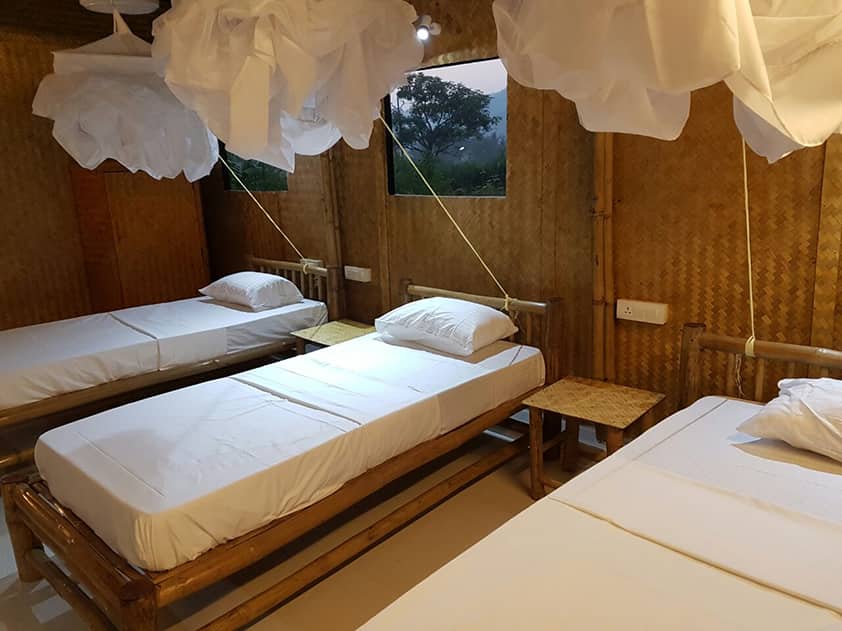
Dormitory Room
USD 1550
Early Bird Price - USD 1450
Registration Fees - USD 300
(non-refundable)
Dormitory room, shared among 6 people.
- 6 Bed Dormitory Room
- 28 Days & 27 Nights
- Course Manual & Study Materials
- 3 Vegetarian Meals /Day
- Tea / Coffee / Filtered Water
- Airport Transfer (Dabolim airport)
- Wifi access
- Access to swimming pool
- Bicycle for geting around
- Beach Yoga
- Excursion
- Complementary - Vegetarian Indian Cooking Classes
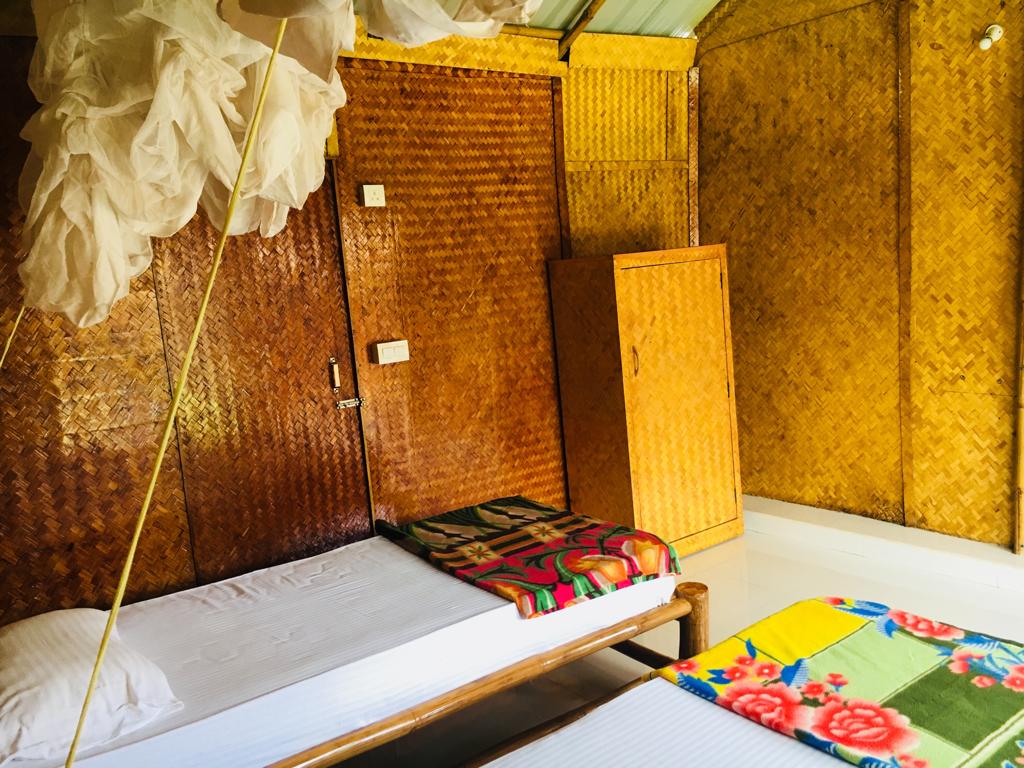
Twin-sharing Room
USD 1750
Early Bird Price - USD 1650
Registration Fees - USD 300
(non-refundable)
Room with 2 beds.
- 2 Beds Double/Twin-sharing room
- 28 Days & 27 Nights
- Course Manual & Study Materials
- 3 Vegetarian Meals /Day
- Tea / Coffee / Filtered Water
- Airport Transfer (Dabolim airport)
- Wifi access
- Access to swimming pool
- Bicycle for geting around
- Beach Yoga
- Excursion
- Complementary - Vegetarian Indian Cooking Classes
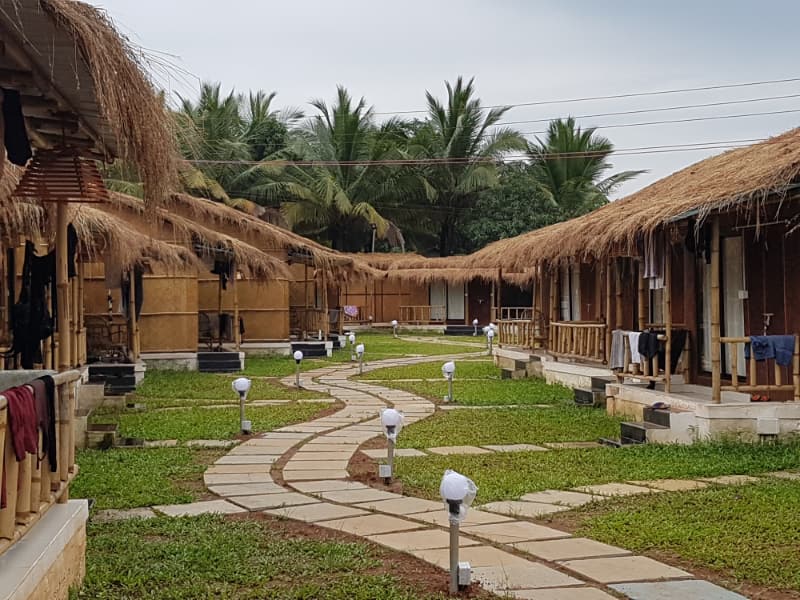
Private Cottage
USD 2300
Early Bird Price - USD 2200
Registration Fees - USD 300
(non-refundable)
Private Cottage with Single Bed.
- Single Bed, Private Cottage
- 28 Days & 27 Nights
- Course Manual & Study Materials
- 3 Vegetarian Meals /Day
- Tea / Coffee / Filtered Water
- Airport Transfer (Dabolim airport)
- Wifi access
- Access to swimming pool
- Bicycle for geting around
- Beach Yoga
- Excursion
- Complementary - Vegetarian Indian Cooking Classes
Food & SAMPLE MENU
At Sayujya Yoga, we have chosen the food as per the requirements of the 200 hour yoga teacher training practitioners. Keeping in mind the nutritional values and following the guidelines of ayurvedic science, we have prepared a wide spread of sattvik and rajasik food which satisfies not only the taste of tongue but also the soul and mind.
Sample Menu
Breakfast
- Fruits
- Yogurt / Milk / Soya Milk
- Sprouts
- Porridge
- Oats
- Bread
- Pancakes
Lunch
- Salad
- Rice / Pulao
- Chapati
- Vegetable Curry
- Pulses (Dal)
- Chutney
- Raita
Dinner
- Soup
- Rice / Pulao
- Chapati
- Vegetable Curry
- Pulses (Dal)
- Chutney
- Dessert
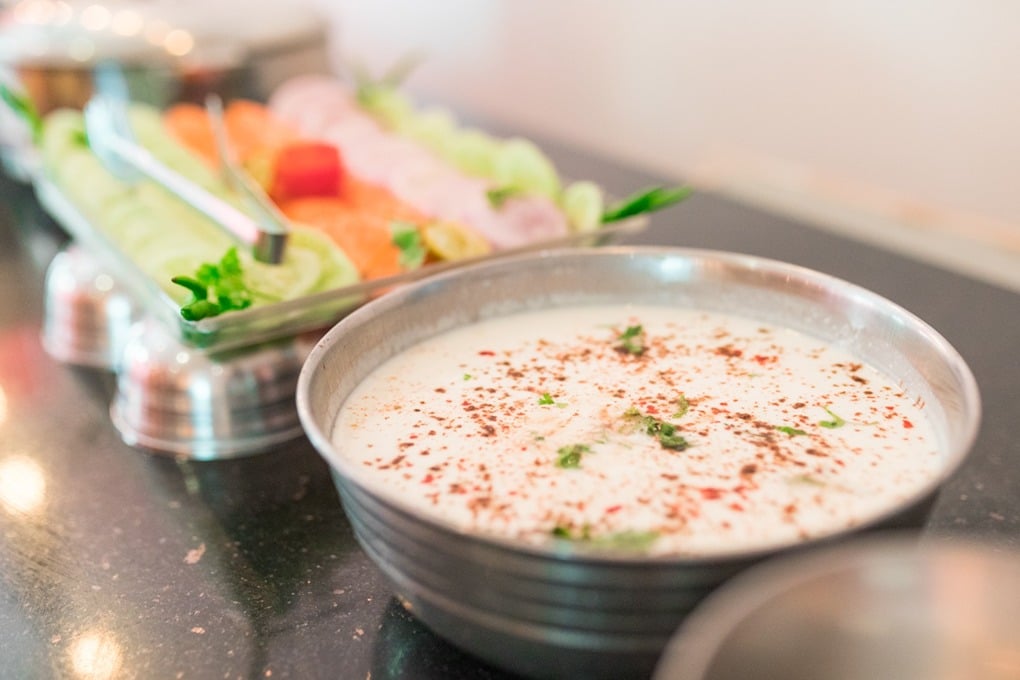
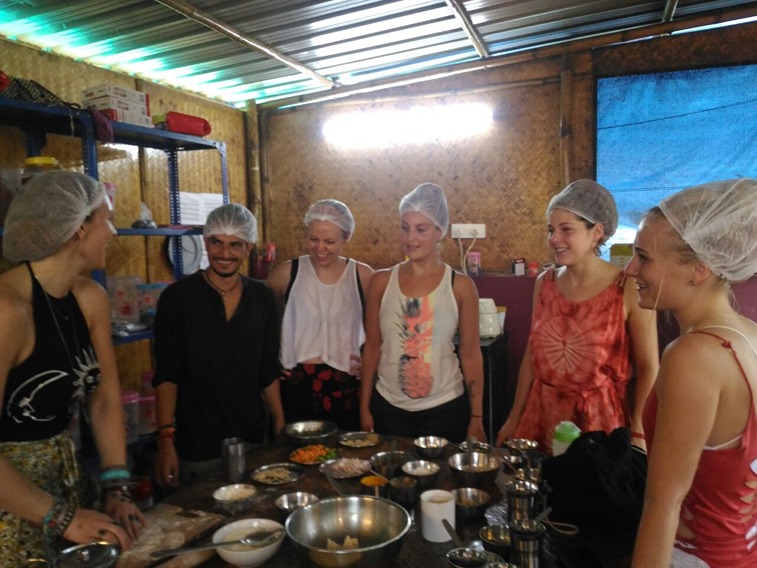

Your Teachers
200 Hour Yoga Teacher Training
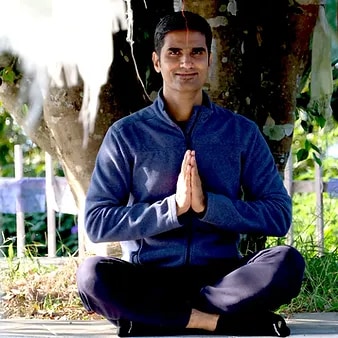
Hardk Mehta
E-RYT 500 & YACEP
Hardik is an E-RYT 500 & YACEP (Yoga Alliance Continuing Education Provider),
Yoga Alliance, USA.
He has been practicing yoga for the last 9 years. Prior to finding his true calling in Yoga, he was working with various corporates for 12 years in the Retail and eCommerce sector.
He specialises in making classes accessible for everyone. He teaches Hatha Yoga, Ashtanga Vinyasa, Functional Approach towards Asanas, Usage of Props based on Structural Limitations, Cueing and Sequencing a Class and Functional Anatomy.
He has completed his Masters in Yogashastra, Teacher’s Training Course from Mysore in Ashtanga Vinyasa, Diploma in Yoga Education, Yoga Posture, Prop, and Alignment Specialist. Apart from Yogic qualification he also possess a degree in Masters of Marketing Management.
Hardik conducts and teaches in Sayujya Yoga Teacher Training and Continuing Education Program for Yoga Teachers in Mumbai, Goa (India) and Pokhara (Nepal)
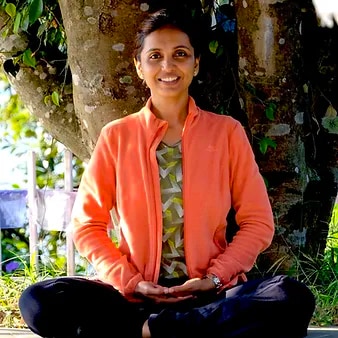
Prutha Bhatt
M.A. in Yogashastra, Pursuing PhD.
Prutha is a visiting faculty at Yoga Department of Somaiya Vidyavihar University, Mumbai. She is currently pursuing her Ph.D.in Yoga from the same University. She is Qualified for the post of Assistant Professor (Yoga) by clearing the NET Exam conducted by University Grants Commission, India.
She has been practicing yoga for the last 9 years. Prior to finding her true calling in Yoga, she was working as a visiting faculty in prominent Fashion Designing institutes in Mumbai.
She specialises in teaching Yoga Philosophy, Pranayama, Mudra, Bandhas, Anatomy & Physiology for Yoga Teachers. She also is an Injury Prevention Specialist in Asanas. She is conducting her Doctoral Research on Asana related Musculo-Skeletal Injuries and is working towards making Yogasanas a safe and accessible practice for everyone.
She has completed her M.A. in Yogashastra, Diploma in Yoga Education, and a Certification course in Patanjala Yoga Darshan, Sankhya Darshan, Bhagwad Geeta conducted by Dr. Rudraksha Sakrikar.
Prutha conducts and teaches in Sayujya Yoga Teacher Training and Continuing Education Program for Yoga Teachers in Mumbai, Goa (India) and Pokhara (Nepal)
Guidelines for Students
- Students should maintain proper discipline and decorum in the school environment.
- No alcohol, meat or smoking allowed on the campus.
- Students should abstain from the intake of intoxicants during the course.
- An attendance of 85% Is mandatory for the successful completion of the yoga alliance certificate.
- Any misbehavior during the course in the campus or in classes will lead to a point of cancellation of your certificate even forceful abandonment from the campus.
- In case of any emergency, if a student needs to leave the course halfway, his/her money will not be reimbursed, however, he/she can attend the same course, at the same location at a different time with the permission of the organizers.
- A non-refundable fee of $300 will be charged to book a seat for one time before the 200 hour yoga teacher training course.
- The school does not provide health insurance any damage covering during the course.
- A student will be responsible for his or her own wellbeing and must communicate his/her special needs and follow teachers’ advice to avoid injuries.
- The time table for 200 hour yoga teacher training will be provided during the orientation and must be adhered to by all and sundry
Facilities
The Center is equipped with
- Yoga Shalas, Yoga Mats, Speaker, LCD Projector
- Eco-friendly bamboo huts and elegant rooms (Dorm/Twin/Single)
- Three chill-out sitting areas
- Swimming Pool to get refreshed
- Open sided dining area
- Reception / Lounge
- Laundry service
- Small library
- Hot water ( available separately)
- Tuk-tuk on call
- 24 hours security at Ashram
- 24*7 Wifi & Bicycles
The Rooms come equipped with:
- Private bathroom with western toilet
- Mini almirah to be shared among roommates
- Comfortable mattress and pillow
- Blanket and mosquito net
- Toilet paper
- Weekly housekeeping


